adventure
Monster Tale
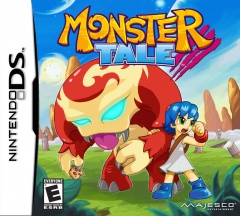 I love genre mashing, and Monster Tale is certainly a special case of mixed, but excellent heredity. We have the popular and super combination of Metroid and Castlevania, plus monster training that mixes Pokemon, Tamagotchi, and E.V.O.: Search for Eden. Excellent genes also bears the burden of high expectations, however, can Monster Tale possibly meet them?
I love genre mashing, and Monster Tale is certainly a special case of mixed, but excellent heredity. We have the popular and super combination of Metroid and Castlevania, plus monster training that mixes Pokemon, Tamagotchi, and E.V.O.: Search for Eden. Excellent genes also bears the burden of high expectations, however, can Monster Tale possibly meet them?
Released on the Nintendo DS late last month, Monster Tale was developed by DreamRift and published by Majesco. It pairs up a young girl and her monster that evolves and grows throughout the game. Trapped in a world ran by children who think themselves royalty, our young heroine is a bit like Dorothy in Oz, just with Chomp for companionship.
I originally meant to write at least a half-hour handheld review of Monster Tale, but I kept playing and before I knew it, the game was over. Here is my review of Monster Tale for the Nintendo DS.
Okamiden
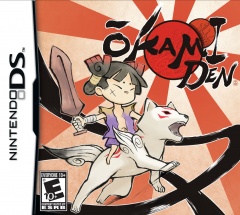 Before I say anything, I beat Okami. It was a fun game with some issues, and my PlayStation 2 version is an important part of my video game collection.
Before I say anything, I beat Okami. It was a fun game with some issues, and my PlayStation 2 version is an important part of my video game collection.
Before I say anything else, I didn’t like the first hour of Okami. It’s one of the few games I went back to play the first hour of because I thought it would illustrate well what a bad first hour looked like, and I was right. But it’s also a good example of where this site can go wrong. Some games like Okami just take a long time to get going, but this can also cause gamers to quit prematurely, like my friend and fellow writer Steve did.
Enter Okamiden, the chibi-ized version of Okami for the Nintendo DS. Okamiden will likely go down as one of the last good DS games before the 3DS is released in a few weeks (hopefully time remembers Radiant Historia, as well). Because I enjoyed Okami but didn’t like its first hour, Okamiden seems like the perfect game to try out for a bit. Will Capcom repeat the same mistakes they made with Okami? Will the game be too targeted for children? How will the gameplay and stylized graphics translate to the small screen?
Released yesterday, here is Okamiden’s first hour.
Enslaved: Odyssey to the West
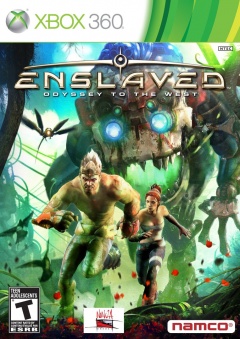 The First Hour is all about first impressions. But it’s very hard to go into a game without any preconceptions, probably best illustrated by my recent foray into Fable III, a sequel to a game I didn’t like very much. But sometimes games are just so far off your radar, that they fall into your lap as a mysterious disc, ready to be explored and uncovered.
The First Hour is all about first impressions. But it’s very hard to go into a game without any preconceptions, probably best illustrated by my recent foray into Fable III, a sequel to a game I didn’t like very much. But sometimes games are just so far off your radar, that they fall into your lap as a mysterious disc, ready to be explored and uncovered.
Enslaved: Odyssey to the West is one of those games. The only thing I know about it is what I can glean from its name and cover art. Let us see... the title alone seems to suggest something related to slavery and An American Tale, while the cover might make you wonder why the slaves are running from a Colossus. And then you might question the colorfulness of such a dire situation, and why that girl from Heavenly Sword is hanging around?
Yes, I am in the great situation of playing the first hour of a game I know nothing about. My first impressions can truly be formed by just the game itself and none of the surrounding hype. But first, a real quick primer. Enslaved: Odyssey to the West was released in 2010 for the Xbox 360 and PlayStation 3, developed by Ninja Theory (creators of Heavenly Sword, so that explains the girl). Scores were good, sales were lackluster, and Andy Serkis of Gollum fame did motion capture.
Okay, let’s get into this, here’s the first hour of Enslaved: Odyssey to the West.
Fable III
 I wasn’t much of a fan of Fable II, so I’ll be honest to say that Fable III has a lot to prove to get me to play past the first hour. The gameplay needed a lot of improvement to start, and the overall presentation of Fable II just felt stuttering and lazy. I do have some hopes that developers can learn from their mistakes, however.
I wasn’t much of a fan of Fable II, so I’ll be honest to say that Fable III has a lot to prove to get me to play past the first hour. The gameplay needed a lot of improvement to start, and the overall presentation of Fable II just felt stuttering and lazy. I do have some hopes that developers can learn from their mistakes, however.
Released in October of last year, Fable III received good scores from major review outlets and had sold over two million copies by the end of the year. A respectable number, though creator Peter Molyneux says it needs to sell about five million for the series to continue. I’m not an industry analyst but this seems like a long way to go now that the holiday season is over.
While I may not like the finished product much, I will probably continue to play the first hour of Molyneux’s games though as he can just be so fiendishly over the top with his ambition and pride. Will Fable III be able to succeed where its predecessor faltered? Or will its first hour lock me in? Let’s find out.
Final Fantasy Crystal Chronicles: The Crystal Bearers
 "Some of this game is fun...is that enough for me to keep playing?"
"Some of this game is fun...is that enough for me to keep playing?"
Ever
had that feeling? Maybe you trudged through an RPG with a terrible
battle system just because you liked a few of the characters. Perhaps
you put up with a broken sports game just because the presentation was
TV-true. Or maybe you played any of the open-world Spider-Man games
recently, swinging joyously through the boxy Manhattan skyline, full of
texture pop-in and framerate dips.
Final Fantasy Crystal
Chronicles: The Crystal Bearers is kind of like that. Except where the
fun elements of these previous examples are woven into the overall
progression of the game, FFCCTCB never actually shines the spotlight on
its best feature throughout the otherwise lackluster adventure, leaving
it merely as a side attraction.
I was hoping the game would improve after its first hour, and it did...but was it too little, too late?
Penumbra: Overture
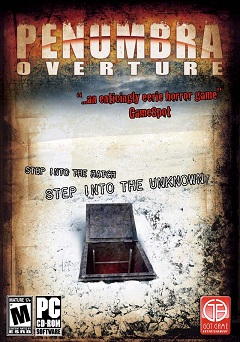 Just in time for Halloween, we have a special first hour of Penumbra: Overture. Released in 2007 by indie developer Frictional Games,
Penumbra: Overture is the first in a trilogy that promises to be a
uniquely frightening experience. As part survival horror, part puzzle
solver and part first person shooter, initial previews evoke thoughts of
Half-Life 2 infused with terror, which is just fine with us. I've
heard great things about the game for a while, mostly from flattering
word-of-mouth. This is as good a time as any, after purchasing it from
the Humble Indie Bundle several months ago.
Just in time for Halloween, we have a special first hour of Penumbra: Overture. Released in 2007 by indie developer Frictional Games,
Penumbra: Overture is the first in a trilogy that promises to be a
uniquely frightening experience. As part survival horror, part puzzle
solver and part first person shooter, initial previews evoke thoughts of
Half-Life 2 infused with terror, which is just fine with us. I've
heard great things about the game for a while, mostly from flattering
word-of-mouth. This is as good a time as any, after purchasing it from
the Humble Indie Bundle several months ago.
For this first hour playthrough, we've trying something a bit different. I played through and recorded the initial first hour and then sent the video to Greg, who then watched and wrote what he saw and felt during the run. I was curious in seeing how his experience would differ from mine, especially since third-person impressions are so important to overall game opinion, especially when it comes to making purchasing decisions. So I'll hand this off to Greg (while adding some extra comments I deem appropriate) and then bring it back for the conclusion.
If you wish, you can follow along yourself with the provided Youtube videos. Apologies about the graphical and slight sound sync issues, but you can blame Youtube for those.
Limbo
 Theologically, limbo exists as a state of divine neutrality, a residence
between heaven and hell. Limbo by Playdead Studios displays this fuzzy
pseudo-reality in its presentation, but with a sinister twist. This
limbo can be cruel, grewsome and even downright evil. Bear traps randomly lie on the
ground, forever waiting just for you alone to trigger them. Giant spiders
hide in caves, hoping you'll wander close enough for them to skewer with their giant
legs. In Limbo, ghost children satisfy their concept of play by setting
up guilottines and buzzsaws to shred you. This game is in no way particularly kind.
Theologically, limbo exists as a state of divine neutrality, a residence
between heaven and hell. Limbo by Playdead Studios displays this fuzzy
pseudo-reality in its presentation, but with a sinister twist. This
limbo can be cruel, grewsome and even downright evil. Bear traps randomly lie on the
ground, forever waiting just for you alone to trigger them. Giant spiders
hide in caves, hoping you'll wander close enough for them to skewer with their giant
legs. In Limbo, ghost children satisfy their concept of play by setting
up guilottines and buzzsaws to shred you. This game is in no way particularly kind.
However, that cruel nature only adds to the atmosphere as the player must remain constantly aware of the presense of death in this bizarre, mysterious minimalist world. In this world and state of existence, death is the norm. Beginning as a stylistic proof of concept by a disgruntled game artist named Arnt Jensen, the concept soon flourished into a full game as Jensen subsequently co-founded Playdead Studios with Dino Patti to develop his idea. Originally planned for a PC release, Playdead was able to procure Dutch government grants and investor support while eventually deciding on an Xbox Live Arcade release, likely to avoid piracy worries and possibly for 360 exclusivity bonuses provided by Microsoft. The game eventually released this summer on July 21st during the 360's "Summer of Arcade." So, how does the final product match atmosphere and action? Does the constant presence of death help or hurt player mood and motivation? Let's take a deeper look and try to decide.
Castlevania: Lament of Innocence
 I'd never really paid much attention to the Castlevania series until Dawn of Sorrow was featured during the early days of the Nintendo DS. I was a bit hesitant to purchase the game, writing off the series' gothic style as that of a poor horror game. But in late 2005, I ventured into Castlevania for the first time and found its undead denizens too charming to slay just once. I've returned to see Lord Dracula and his wacky friends eight times since then, and enjoyed every visit.
I'd never really paid much attention to the Castlevania series until Dawn of Sorrow was featured during the early days of the Nintendo DS. I was a bit hesitant to purchase the game, writing off the series' gothic style as that of a poor horror game. But in late 2005, I ventured into Castlevania for the first time and found its undead denizens too charming to slay just once. I've returned to see Lord Dracula and his wacky friends eight times since then, and enjoyed every visit.
Having played every modern "Metroidvania" since then (besides the recently-released Harmony of Despair, focused on online multiplayer), I realized I hadn't yet spent any time in a polygonal version of Drac's realm. The impending release of franchise reboot Lords of Shadow encouraged me to stop by the local game store and check the ten-and-under bin for anything Castlevania. The various entries on the Nintendo 64 and PlayStation 2 systems have received mixed reviews, but I'm willing to take a chance on a bargain title in one of my favorite franchises.
My excursion to GameStop ended with my wallet ten dollars lighter and a copy of Castlevania: Lament of Innocence added to my collection. I've spent sixty minutes in the demon castle. How did this latest visit fare?
Final Fantasy Crystal Chronicles: The Crystal Bearers
 It's almost expected these days that a Final Fantasy game will be announced long before it ever hits store shelves. 2010's Final Fantasy XIII was first made public nearly four years before anybody outside of Japan got their hands on the final discs, and its companion titles revealed the same day aren't even locked for release yet. I know hype builds over time, but when a game passes the four year mark since announcement, I tend to forget about it completely.
It's almost expected these days that a Final Fantasy game will be announced long before it ever hits store shelves. 2010's Final Fantasy XIII was first made public nearly four years before anybody outside of Japan got their hands on the final discs, and its companion titles revealed the same day aren't even locked for release yet. I know hype builds over time, but when a game passes the four year mark since announcement, I tend to forget about it completely.
Square Enix's teasing ways aren't exclusive to the main HD-platform Final Fantasy games either, as the absurdly-titled Final Fantasy Crystal Chronicles: The Crystal Bearers was let out of the bag a year before its HD cousins, but saw release only months prior. There were multiple rumors of cancellation, rumblings of drastic changes mid-development, and over two-thousand days between announcement and release, but FFCC:TCB did eventually see the light of day.
I remember the first teaser footage and a full trailer released some time later, which featured the protagonist in some pretty exciting situations and plenty of lighthearted flair. As time went on, I forgot about the title completely when it saw release last Christmas, but picked it up on the cheap a few seasons after its launch. Did all those years in the oven leave Crystal Bearers well-done or burnt to a crisp?
Metroid: Other M
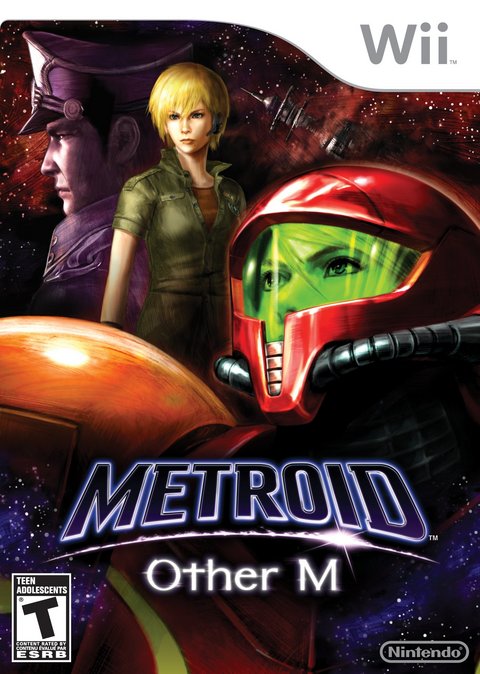 Metroid has never been one of Nintendo's big money-makers, but that
hasn't stopped the franchise from garnering some very devoted fans. It's
not uncommon to see Super Metroid or Metroid Prime sitting atop the
list of favorites from hardcore gamers, and for good reason. Super
Metroid provided a sprawling, interlacing realm of disquieting alien
dangers and secrets, and Metroid Prime translated that experience into
3D with incredible audio-visual design and some interesting
world-building mechanics built right into the gameplay.
Metroid has never been one of Nintendo's big money-makers, but that
hasn't stopped the franchise from garnering some very devoted fans. It's
not uncommon to see Super Metroid or Metroid Prime sitting atop the
list of favorites from hardcore gamers, and for good reason. Super
Metroid provided a sprawling, interlacing realm of disquieting alien
dangers and secrets, and Metroid Prime translated that experience into
3D with incredible audio-visual design and some interesting
world-building mechanics built right into the gameplay.
Though
there's certainly a base blueprint from these two trailblazers, no two
Metroid games feel exactly alike. Even so, I've found something to love
in each and every one of them (except for the antiquated debut NES game,
which admittedly I just played for the first time days before Other M's
release). The tension of being hunted in Fusion, the sudden shifts in
power at Zero Mission's final hour, the thousands of text logs scattered
through the Prime series...as far as I'm concerned, it's all great
stuff.
It's only natural that the formula would see some alterations and evolutions over a quarter of a century, and Metroid: Other M is the latest and most radical experiment to come out of Nintendo's R&D labs in quite some time. Featuring third-person 3D action gameplay and a heavy emphasis on cinematic storytelling, the curiously-subtitled Other M certainly feels very different from its predecessors. It seems to take after Metroid Fusion the most, with a bit of Metroid Prime in there as well, but Other M's additions and adaptations certainly make it feel distinct, for better or worse.
